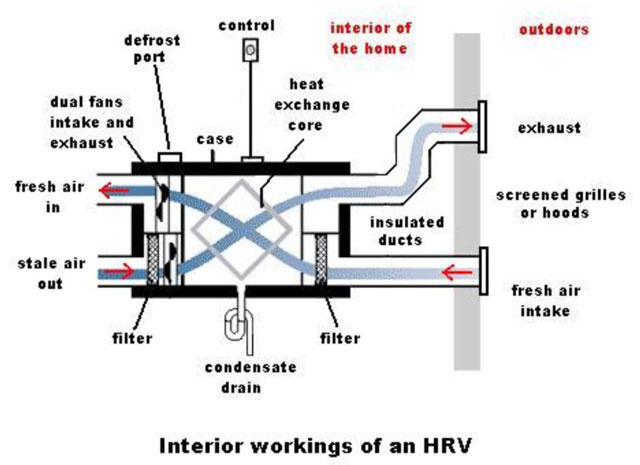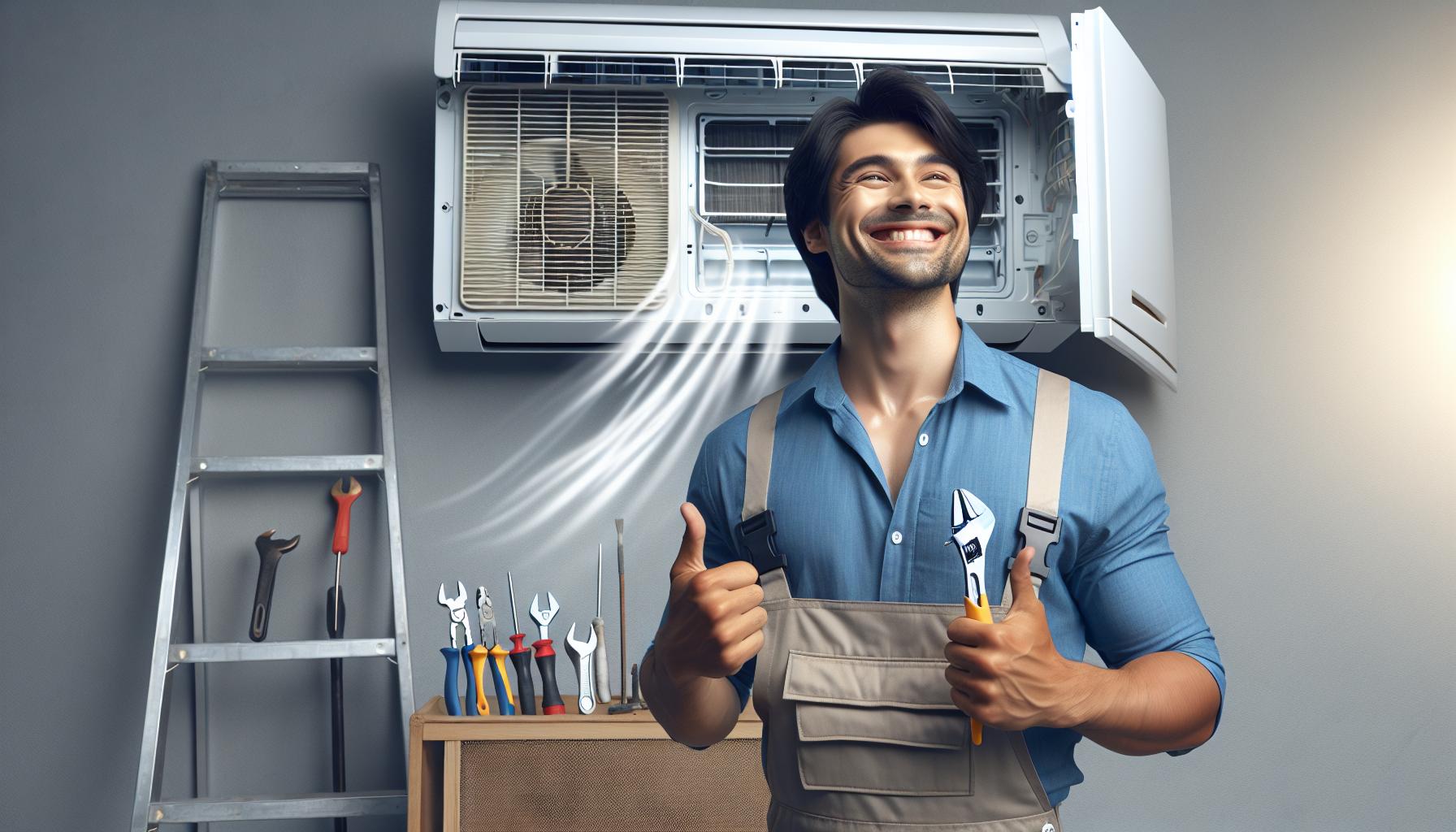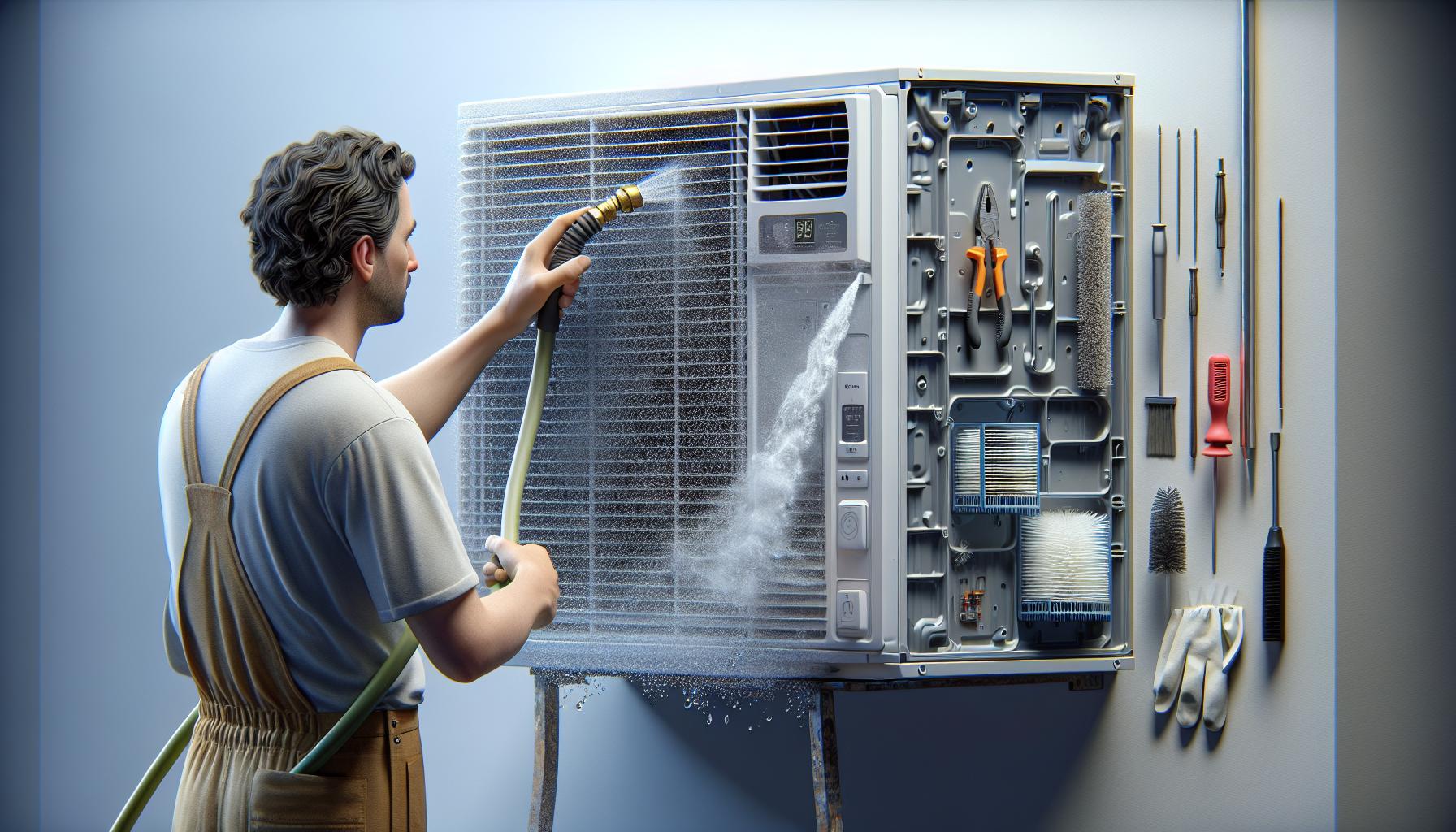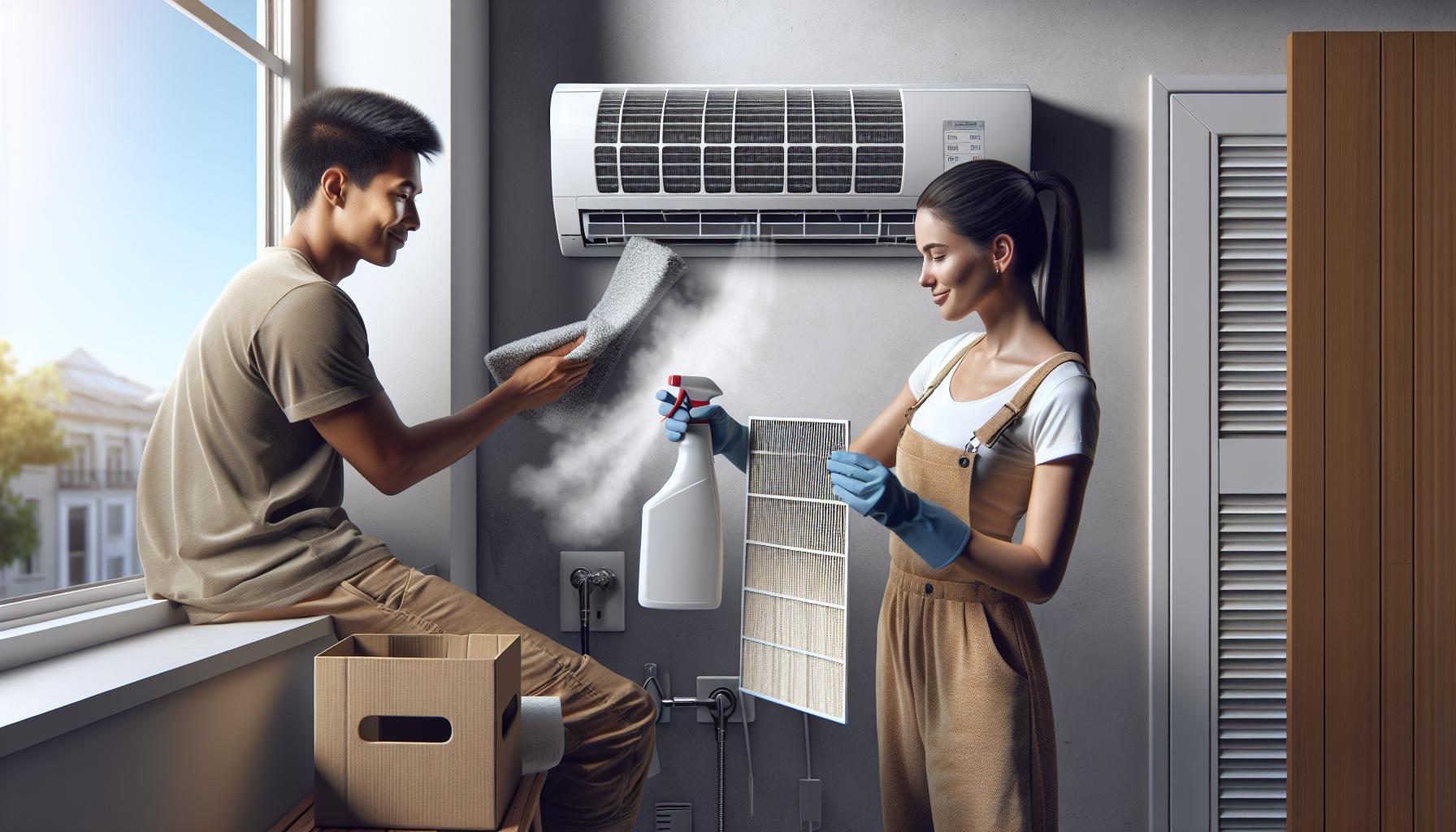Balancing your home’s climate and air quality can be a game-changer for comfort and health. Integrating a Heat Recovery Ventilator (HRV) with your furnace is a smart move, especially in tightly sealed homes where stale air can become a silent nuisance. You’ll discover how an HRV system works in tandem with your furnace to provide fresh air, reduce energy costs, and improve indoor air quality.
Understanding the installation process is crucial, and that’s what we’re diving into. You’ll learn the steps involved, the benefits of pairing an HRV with your furnace, and why it’s an investment worth considering. Whether you’re looking to upgrade your existing setup or starting from scratch, this article will guide you through the essentials of HRV installation with your furnace.
How Does an HRV System Work With a Furnace?
The functioning of an HRV system in tandem with your furnace is a testament to modern home climate control efficiency. Here’s how the two systems collaborate to enhance the air quality and temperature in your home.
Furnace Integration
HRVs are ingeniously designed to connect with your furnace, harnessing its airflow distribution capabilities. When your furnace kicks in, the HRV unit uses the existing ductwork to circulate fresh outdoor air into your home. Conversely, it extracts stale indoor air and expels it outside. This interplay happens simultaneously, thanks to a core heat exchanger at the heart of the HRV.
Heat Exchange Mechanism
Within the HRV, there’s a core heat exchanger where the magic happens. As stale, warm air passes through the exchanger on its way out, it warms up the incoming cold, fresh air. This process ensures that you’re not just getting fresh air but that it’s also pre-heated to minimize the additional heating load on your furnace.
- Energy Recovery: The energy recovery feature of the HRV works to retain the heat from the extracted air, reducing the demand on your furnace.
- Moisture Balance: By transferring moisture from the outgoing air to the incoming air, HRVs maintain an ideal humidity level in your home.
Operational Symbiosis
Your HRV and furnace work together based on the demands of your home climate, with thermostats and sensors regulating their operation. In essence, they function as one cohesive unit, providing you with a seamless climate control experience.
Remember, the efficiency of the HRV system’s integration with your furnace depends significantly on proper installation and regular maintenance. Ensure that you have them checked and serviced by professionals to maintain optimal performance.
The Benefits of Combining an HRV with Your Furnace
When you pair an HRV with your furnace, you’re enabling a synergy that amplifies your home’s comfort and efficiency. This combination ensures optimal indoor air quality and translates to real-world benefits that can be felt daily.
- Enhanced Air Quality: The HRV system swaps stale, contaminated indoor air with fresher outdoor air. This continuous exchange reduces pollutants, allergens, and undesirable odours, providing you with a cleaner breathing environment.
- Energy Savings: By recycling heat from the exhaust air, an HRV significantly lessens the workload on your furnace. Energy consumption goes down and so do your utility bills. Over time, these savings can be substantial, mitigating the initial cost of HRV installation.
- Consistent Comfort: Integrating an HRV means heated air is more evenly distributed throughout your home. No more cold spots or fluctuating temperatures; just steady warmth wherever you go.
- Moisture Control: Balancing humidity, the HRV curtails the risks associated with mould and mildew growth, safeguarding your home’s structure and the health of its inhabitants.
| Benefit | Impact on Home |
|---|---|
| Enhanced Air Quality | Cleaner breathing environment |
| Energy Savings | Lower utility bills |
| Consistent Comfort | Even temperature distribution |
| Moisture Control | Reduced mould risk |
Remember, the HRV doesn’t just provide these benefits in isolation; it complements and enhances the function of your furnace, leading to a more holistic approach to managing your home’s climate. Regular maintenance of both systems ensures that your combined HRV and furnace unit will perform efficiently for years to come.
Step-by-Step Guide to HRV Installation with a Furnace
Before beginning the installation of your Heat Recovery Ventilator (HRV) system with your furnace, ensure you’re well-informed and equipped with the proper tools. Safety is paramount, so don’t hesitate to contact a professional if you’re unsure about any steps.
Initial Preparation
- Switch off your furnace and main power supply to avoid any electrical hazards.
- Gather all necessary tools, such as screwdrivers, drills, and sealant.
- Verify that your HRV unit is compatible with your existing furnace.
Positioning Your HRV
- Choose a location for your HRV unit close to the furnace to minimize duct length.
- Ensure the spot has adequate support to bear the weight of the HRV.
- Maintain easy access for future maintenance work.
Ductwork Connection
- Cut holes in your existing ductwork to accommodate HRV airflows.
- Connect the HRV’s fresh air and exhaust ducts to your home’s exterior.
- Seal all connections tightly to prevent air leakage.
Electrical Wiring
- Follow the manufacturer’s wiring diagram to connect the HRV to power.
- Ground all electrical connections to prevent shock hazards.
- Wire the HRV controls to your furnace for integrated operation.
Finalizing the Installation
- Check all seals and connections for stability and air-tightness.
- Restore power to your furnace and test the HRV system thoroughly.
- Adjust settings for optimal balance between ventilation and heat recovery.
Regular maintenance of both the HRV system and your furnace is essential for sustained performance, as mentioned earlier. Ensure filters are clean and that airflow is not obstructed, keeping your indoor air quality at its best while optimizing energy use for climate control.
Common Challenges and Solutions During HRV Installation
When installing a Heat Recovery Ventilator (HRV) with your furnace, you’ll inevitably face challenges. Navigating these hurdles effectively ensures a seamless installation and lasting system efficiency.
Ductwork Alignment Issues
Installing an HRV requires precise duct alignment. Misaligned ductwork can lead to inefficient airflow and compromised system performance.
- Solution: Measure twice before you cut. Use flexible connectors if necessary to align the HRV with existing ductwork smoothly.
Incompatible Furnace Systems
Some older furnace models may not be compatible with modern HRV units.
- Solution: Consult with a professional to identify a compatible HRV model for your specific furnace or consider upgrading your heating system.
Electrical Connectivity Problems
Improper wiring can lead to malfunctions or even pose a fire risk.
- Solution: Follow the HRV manufacturer’s wiring diagram closely. Call in a certified electrician if you’re unsure about the wiring process.
Condensation Build-Up
HRVs can create excessive condensation, which might lead to moisture problems.
- Solution: Ensure the HRV system is properly insulated. Install a condensate pump if necessary to remove excess moisture.
Balancing the System
An HRV system needs to maintain balanced airflow to operate effectively.
- Solution: Use balancing dampers and refer to the HRV installation manual to adjust airflow until it’s balanced. Consider a professional service to fine-tune your system.
By addressing these common challenges with the suggested solutions, you’re promoting a successful HRV installation. Ensure you regularly check and maintain your system for the long-term benefits of improved indoor air quality and energy efficiency. Remember, if at any point the installation presents significant difficulties, contacting a certified technician is the wisest course of action to prevent damage or inefficient system performance.
Why Investing in an HRV With a Furnace Is Worth It
Installing a Heat Recovery Ventilator (HRV) alongside your furnace can significantly enhance your home’s energy efficiency and air quality. Unlike traditional ventilation, an HRV system recovers heat from outgoing stale air to warm incoming fresh air, reducing the heating demand on your furnace and lowering your energy bills.
Benefits of an HRV System:
- Consistent Indoor Temperature: By recovering heat, an HRV system maintains a more stable indoor temperature, which is both comfortable and cost-effective.
- Improved Air Quality: HRVs continuously replace stale, polluted indoor air with fresh outdoor air, effectively reducing pollutants and allergens in your home.
- Lower Energy Consumption: HRVs can recover up to 85% of the heat in the outgoing air, meaning your furnace doesn’t work as hard, leading to a decrease in energy consumption.
In regions with cold winters, an HRV can be particularly beneficial. A study in Canada, where temperatures can plummet, demonstrated that incorporating an HRV system could reduce annual heating costs by up to 25%. Moreover, homes with HRVs report fewer issues related to humidity, such as condensation and mould, contributing to a healthier living environment.
By opting for an HRV, you’re not only investing in a greener home but also in the health and wellbeing of your family. The upfront cost of the HRV system is offset by the long-term savings you’ll make on heating expenses. It’s a win-win situation—better air quality and a smaller carbon footprint.
When considering an HRV for your home, you’ll want to make sure it is properly sized and installed. Incorrect installation can lead to an underperforming system, but when done right, it’s a worthwhile investment that pays dividends in both comfort and cost savings over time.
Conclusion
Pairing an HRV system with your furnace isn’t just a smart move for your wallet; it’s a leap forward in creating a healthier home environment. You’ll enjoy the warmth without the worry of stale air or excessive humidity. Remember, the key to reaping the full benefits lies in getting the sizing and installation spot on. Make the investment today, and you’ll see the difference in your comfort levels and energy bills tomorrow. It’s a decision that promises to deliver both immediate satisfaction and long-term savings.
Related Posts:
- Understanding the Benefits of Smart Thermostats for…
- Understanding Central Heating and Cooling Systems…
- Upgrade Home Living with ComfortPlan: Smart Savings…
- Understanding HVAC Ventilation: A Guide for Homeowners
- Slash Air Conditioner Costs: Tips to Enhance…
- Understanding Furnace Installation: A Guide for Homeowners






